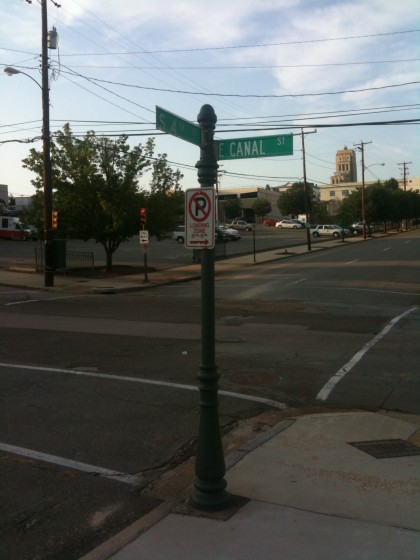One thing advocates of “smart growth” and supporters of historic preservation agree on is the importance of concentrating development where existing infrastructure is already dense — and where houses, businesses, schools, hospitals, and public transportation are already located.
Each time a new housing development is located in an outer-ring suburb or on outlying rural land, local government is burdened with the responsibility to construct and maintain new roads, utilities, and public services. For example, only 25 percent of these “exurbs” connect with existing public transportation systems — the remainder clog roads with more automobiles (and the air with more toxic exhaust). In stark contrast, 60 percent of existing urban neighborhoods are already served by public transportation and have schools, hospitals, and other community services already in place.
Concentrating new construction and rehabilitation in our existing downtowns is the most environmentally and economically sustainable development possible. Much urban building stock is historic, and one of the greatest economic engines driving the rehabilitation of these areas is historic preservation.
Building and rehabilitating in historic contexts requires sensitivity, however, and can be expensive. Recognizing this, the federal government first established a rehabilitation tax credit in 1976, acknowledging that rehabilitation, while beneficial for urban areas, was an added cost to owners.
A 20 percent tax credit was established to provide incentives for careful rehabilitation of income-producing (commercial) historic buildings, incentives that prove ever more attractive to property owners and developers.
For example, in fiscal year 2008 (the most recent year for which figures are available), the National Park Service approved 1,231 projects representing a staggering private investment of $5.64 billion — all of which cost the Federal treasury less than $1.128 billion in tax credits. This powerful financial engine has been so successful that 30 states have added complementary rehabilitation tax credit programs, and 25 have extended their programs to non-income-producing properties (i.e., private homes).
The tax credit program leverages private money to rehabilitate historic buildings, returning them — and the surrounding area — to productive use. Because state and local tax incentives can often be attached to the federal credit, the program leads to greater public awareness of the benefits of historic preservation, which, in turn, provides incentives for private investment in historic neighborhoods.
The federal Rehabilitation Tax Credit program, on average, draws five private dollars for every public dollar invested for historic preservation and adaptive reuse — an especially compelling ratio in today’s economic climate.
Rehabilitation of historic buildings alone, however, is not enough to rehabilitate entire neighborhoods. What about the “missing teeth” in our urban fabric? How do we fill those gaps?
Nationwide, there are some 14,000 historic districts, many of which are plagued by two separate problems: demolished buildings and vacant lots, and inappropriate infill.
According to the Urban Land Institute, by the year 2050 the U.S. urban population will grow by 100 million people, all requiring housing, schools, and places for business — needs that cannot always be met by the existing historic building stock. In these cases, infill construction may be necessary.
Examples of poorly planned and poorly designed urban infill can be found in every city. Astute in crafting public policy to promote the re-use of historic resources, we are lousy at guiding what is built next door, and the urban fabric as a whole suffers badly.
To further stimulate our economy, state and local governments should consider expanding the existing historic preservation tax credit programs to include new, compatible infill development within existing state historic district boundaries. This could be accomplished through complementary state legislation in the form of a Historic District Infill Tax Credit (HDITC) that would further focus development within successful historic districts and encourage the completion of empty blocks.

